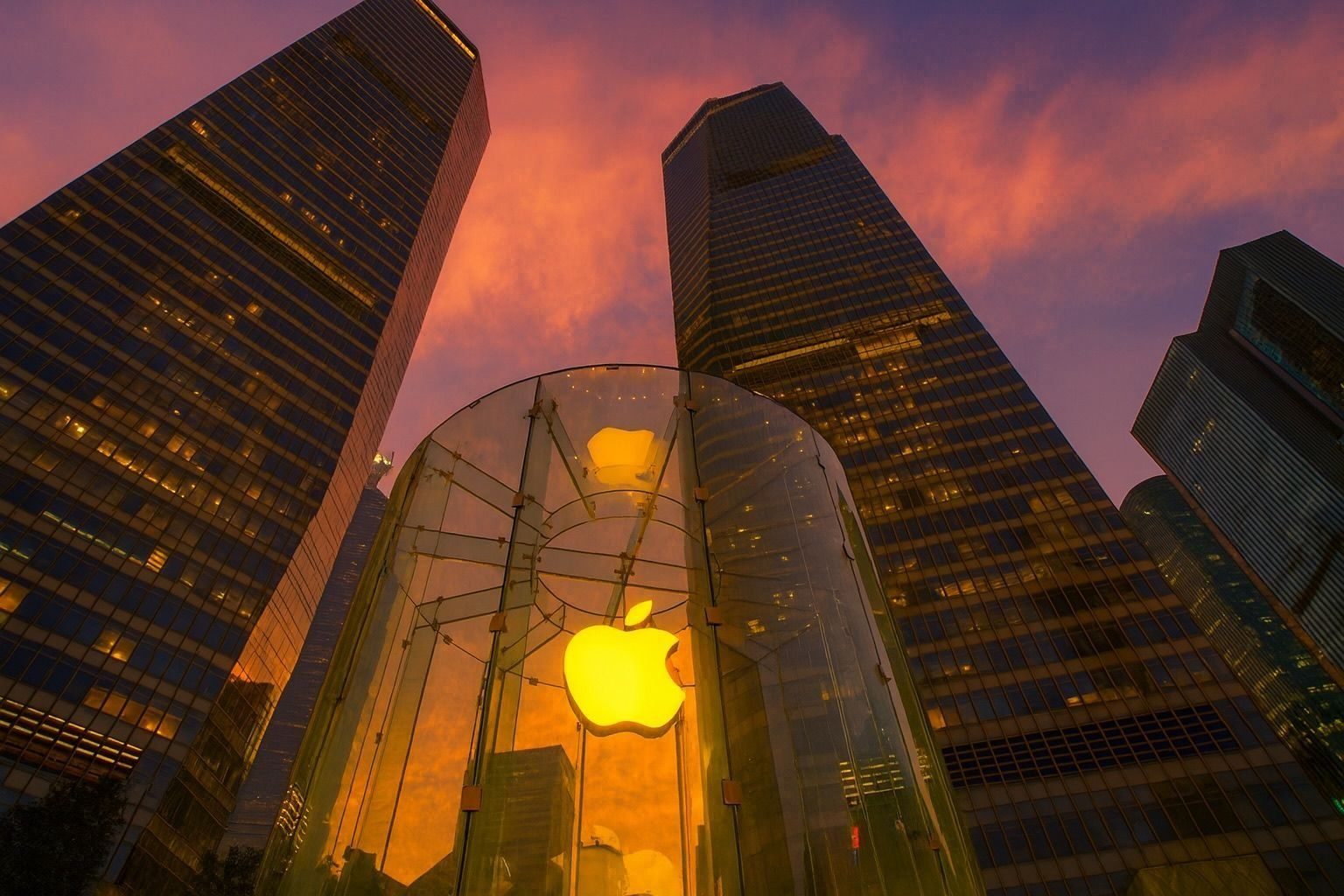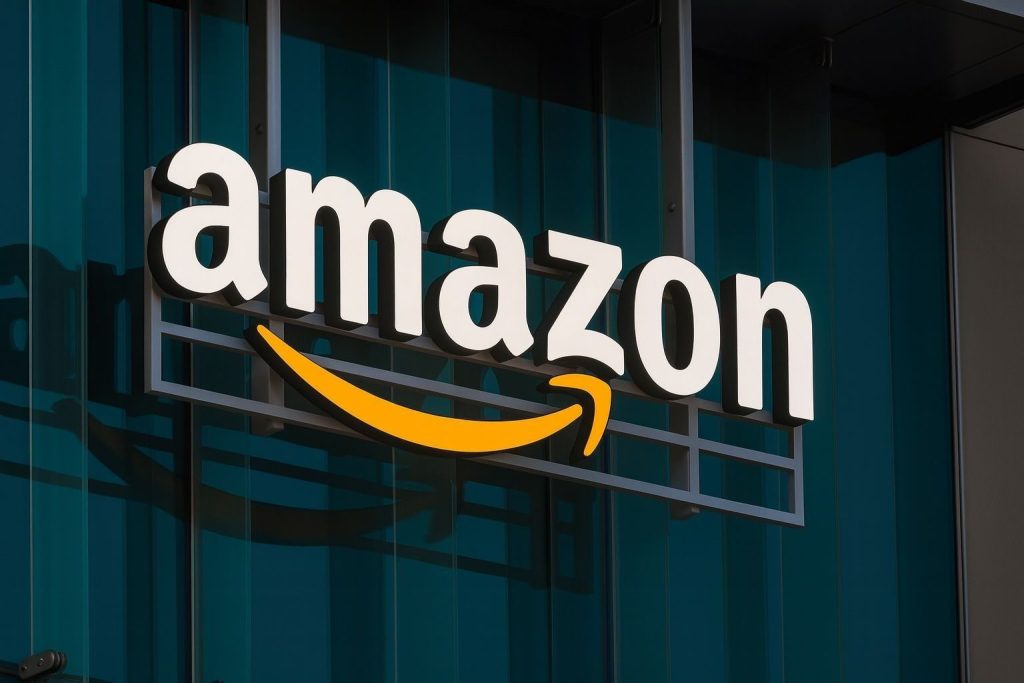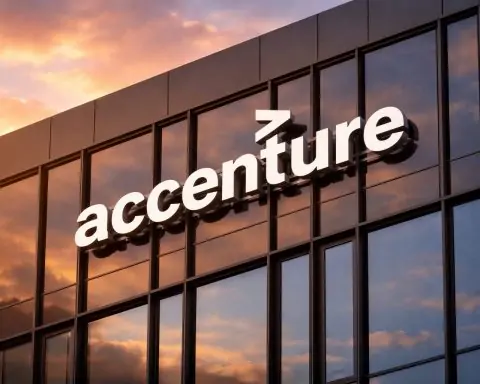Published: November 28, 2025
Apple is closing out 2025 in a paradoxical position: it’s reporting record revenue and rolling out some of its most ambitious products ever, even as regulators on three continents escalate antitrust and digital-market investigations that could reshape how the company operates.
From the launch of Apple Intelligence across its platforms to the new iPhone 17 lineup, M5-powered Macs and iPads, and a massive new U.S. manufacturing and climate push, Apple is trying to define the next decade of computing while defending the ecosystem that made it one of the world’s most valuable companies. [1]
Record Q4 2025 results cap a record year
On October 30, Apple reported fiscal Q4 2025 revenue of $102.5 billion, up 8% year over year, with diluted earnings per share of $1.85, a 13% increase on an adjusted basis. That marked a September quarter record for total company revenue, a September record for iPhone revenue, and an all‑time high for Services. [2]
For the full fiscal year, Apple generated $416 billion in revenue with double‑digit EPS growth, and said its installed base of active devices hit an all‑time high across every product category and region. [3] The board declared a cash dividend of $0.26 per share, payable November 13 to shareholders of record as of November 10. [4]
Equity markets have largely rewarded that performance. One recent analysis notes that Apple shares are up about 13.8% in 2025, helped by investor enthusiasm around the rollout of Apple Intelligence and new hardware, though it also warns that Apple’s valuation now sits well above the broader market and may be vulnerable if growth slows. [5]
Services remain a crucial growth engine. Apple’s Services segment has surpassed 1 billion paid subscriptions, according to recent forecasting on the company, and is expected to keep expanding on the back of App Store revenue, iCloud, Apple Music, Apple TV+, Apple Pay, and newer offerings like Apple Sports. [6]
Apple Intelligence: Apple’s big AI bet goes mainstream
If there’s a single theme to Apple’s 2025 story, it’s AI — or more specifically, Apple Intelligence, the company’s tightly integrated suite of generative and predictive features designed to run on Apple silicon.
In June, Apple announced that Apple Intelligence was “getting even more powerful,” opening up an on‑device foundation model to all developers via a new Foundation Models framework. Any app can now call into the core Apple Intelligence model with just a few lines of Swift, enabling features like personalized quizzes generated from a student’s notes or offline natural‑language search inside hiking and outdoors apps — all without per‑token cloud fees. [7]
Shortcuts and system apps are being “supercharged” as well. Apple Intelligence can now drive intelligent actions in Shortcuts, summarize long text, generate images via Image Playground, and power richer automation flows that remain fully on device or use Apple’s Private Cloud Compute when more processing is needed. [8]
September’s update pushed Apple Intelligence into true mass deployment. With iOS 26, iPadOS 26, macOS Tahoe 26, watchOS 26 and visionOS 26, Apple released a wave of new capabilities, including: [9]
- Live Translation, integrated into Messages, FaceTime, Phone and AirPods Pro 3, for real‑time conversation translation with on‑device processing. [10]
- Visual Intelligence, which can understand what’s on screen, summarize or translate text, and let users search for similar items online with a simple highlight gesture. [11]
- Enhancements to Genmoji and Image Playground to create more expressive, customizable images and emoji‑like characters. [12]
- Workout Buddy, an Apple Intelligence–powered fitness coach that gives spoken motivation based on real‑time and historical health data, processed privately on device. [13]
Underpinning all of this is Apple’s privacy pitch. Most Apple Intelligence models run entirely on device; for more complex tasks, Apple routes data through Private Cloud Compute, a new architecture that uses Apple‑designed servers running on Apple silicon. Apple says data sent to these servers is used only to fulfill a request, isn’t stored, and can be vetted by outside experts who can inspect the server code — a framing it calls a “breakthrough for privacy in AI.” [14]
New hardware: iPhone 17 lineup, iPhone Air and M5‑powered devices
The iPhone 17 family and iPhone Air
Apple’s core business still revolves around the iPhone — and 2025 brought one of the largest updates in years. At its September event, the company introduced the iPhone 17, iPhone 17 Pro, iPhone 17 Pro Max, and an all‑new iPhone Air, available from September 19. [15]
The iPhone Air is positioned as the thinnest and lightest full‑screen iPhone, featuring an ultrathin chassis, an OLED display with a high refresh rate, and Apple’s latest A‑series chip, while integrating tightly with Apple Intelligence features for on‑device AI tasks. [16]
The broader iPhone 17 lineup focuses on camera upgrades, improved battery life, and deeper integration with system‑wide AI, which Apple credits as a key driver of its record Q4 iPhone revenue. [17]
M5: AI silicon for Mac, iPad and Vision Pro
In October, Apple turned its attention to the Mac, iPad and spatial computing, unveiling the M5 chip and a new wave of devices built around it. [18]
Built on third‑generation 3‑nanometer technology, M5 offers: [19]
- A 10‑core CPU with up to four performance cores and six efficiency cores
- A next‑generation 10‑core GPU with a Neural Accelerator in each core, delivering over 4× peak GPU compute vs M4 and up to 45% higher graphics performance
- An improved 16‑core Neural Engine and roughly 30% more memory bandwidth (about 153 GB/s)
M5 now powers the new 14‑inch MacBook Pro, the latest iPad Pro, and an updated Apple Vision Pro, bringing what Apple describes as a “next big leap in AI performance” to all three categories. [20]
The M5 iPad Pro in particular is pitched as Apple’s most capable tablet yet, with major gains in graphics and AI performance that support creative workflows, faster on‑device machine learning, and new iPadOS 26 features. [21]
Accessories & wearables: fashion collaborations and smarter audio
One of Apple’s most eye‑catching November announcements wasn’t a new device, but a new way to wear one.
iPhone Pocket: fashion meets hardware
On November 11, Apple and Japanese fashion house ISSEY MIYAKE unveiled iPhone Pocket, a special‑edition 3D‑knitted accessory designed as an “extra pocket” for any iPhone and other pocketable items. [22]
Key details: [23]
- Crafted in Japan with a single‑piece 3D knit inspired by Issey Miyake’s pleated garments
- Can be worn handheld, tied to a bag, or worn cross‑body
- Short‑strap design: eight colors (lemon, mandarin, purple, pink, peacock, sapphire, cinnamon, black), priced at $149.95 (US)
- Long‑strap design: sapphire, cinnamon, black, priced at $229.95 (US)
- Available from November 14 at select Apple Stores and online in markets including the U.S., UK, France, Italy, Greater China, Singapore, South Korea and Japan
The collaboration underscores Apple’s push to position the iPhone not just as a device, but as a fashion object that people quite literally wear.
AirPods Pro 3 and the AI‑powered ear
Apple also rolled out AirPods Pro 3, which pair tighter hardware integration with Apple Intelligence. Reviews highlight stronger active noise cancellation, new health‑oriented capabilities such as heart‑rate tracking via built‑in sensors, and deeper integration with features like Live Translation for in‑person, phone and FaceTime conversations. [24]
Together with Apple Watch and Fitness+, AirPods Pro 3 are part of a broader strategy to tie health, workouts, and AI‑driven coaching into Apple’s subscription ecosystem.
Services, awards and culture: App Store, Apple Music and MLS
Services not only drive revenue but also keep users locked into Apple’s ecosystem.
App Store Awards highlight a maturing app ecosystem
On November 19, Apple announced 45 finalists for the 2025 App Store Awards, spanning 12 categories across apps and games. The finalists were chosen for innovation, user experience and cultural impact, from productivity and creative tools to indie and AAA games. [25]
The awards serve as both a marketing moment for standout developers and a reminder of how central the App Store remains to Apple’s strategy — even as regulators scrutinize its fees and rules.
Tyler, The Creator named Apple Music Artist of the Year
On November 20, Apple Music named Tyler, The Creator its Artist of the Year for 2025, citing his cultural influence and record‑breaking engagement on the platform. Between November 2024 and October 2025, listeners logged more than 4.5 billion minutes of his music, according to coverage of Apple’s announcement. [26]
The award continues Apple Music’s push to position itself as a tastemaking platform that amplifies major artists while differentiating from rivals like Spotify through exclusive content and editorial positioning.
MLS comes to Apple TV at no extra cost
In sports, Apple made a significant move: starting in 2026, all Major League Soccer matches will be available to Apple TV subscribers at no additional cost, with the standalone MLS Season Pass ending after the 2025 season. [27]
Fans will be able to stream every regular‑season match, the Leagues Cup, MLS All‑Star Game, Campeones Cup, and Audi MLS Cup Playoffs under the standard Apple TV subscription — another step in Apple’s march into premium live sports alongside Friday Night Baseball and other properties. [28]
Manufacturing, jobs and the $600 billion U.S. commitment
Beyond shiny devices and software, Apple is also reshaping its industrial footprint.
In August, Apple announced a new $100 billion U.S. investment, bringing its four‑year U.S. commitment to $600 billion and launching an American Manufacturing Program (AMP) intended to pull more of its supply chain onto American soil. [29]
Highlights include: [30]
- Working with Corning, Coherent, GlobalWafers America, Applied Materials, Texas Instruments, Samsung, GlobalFoundries, Amkor and Broadcom to build an end‑to‑end U.S. silicon supply chain, from wafers to advanced packaging.
- A new Houston factory that will produce advanced Apple servers starting in 2026. These servers are designed to power Apple Intelligence via Private Cloud Compute and are built around Apple silicon with a focus on security and energy efficiency.
- Expansion of Apple’s data centers in North Carolina, Iowa, Nevada and Oregon to support iCloud, the App Store, Apple Music, iMessage, Apple TV+ and future AI workloads.
- The Apple Manufacturing Academy in Detroit, launching August 19, which will help small and mid‑sized manufacturers adopt advanced manufacturing and AI.
- Plans to directly hire 20,000 additional employees in the U.S. over four years, mainly in R&D, silicon engineering, software and AI.
Apple says it already supports more than 450,000 supplier and partner jobs across all 50 states. [31]
Climate and conservation: betting on forests for Apple 2030
Apple is also touting progress toward its Apple 2030 goal of becoming carbon‑neutral across its entire footprint by the end of the decade.
On September 23, the company announced a new Restore Fund project to protect and restore 14,000 acres of coastal redwood forest in California’s Gualala River Forest, in partnership with The Conservation Fund. [32]
Key points: [33]
- The project is part of an expanded Restore Fund portfolio spanning two dozen conservation and regenerative agriculture projects across six continents.
- Apple aims to cut its emissions by 75% compared to 2015, and says it has already surpassed a 60% reduction.
- By 2030, Apple and its suppliers are targeting removal of 9.6 million metric tons of CO₂ per year via nature‑based carbon‑removal projects.
- The Gualala project supports sustainable forest management, local jobs and biodiversity while generating high‑quality carbon credits.
Apple has previously funded forest protection in Maine, North Carolina and Washington state, and is extending grants to organizations like Conservation International and the Jane Goodall Institute to support conservation worldwide. [34]
Regulatory and legal pressure intensifies worldwide
While Apple pours money into products, AI and climate projects, regulators are increasingly focused on how the company’s ecosystem works — especially the App Store, advertising, data tracking and default services.
Europe: DMA fines, new probes and national investigations
The EU’s Digital Markets Act (DMA) has become a central pressure point.
- In April 2025, the European Commission found Apple in breach of its anti‑steering obligation under the DMA for App Store rules that restricted developers from informing users about cheaper offers or alternative payment options outside Apple’s in‑app purchase system. Apple was fined €500 million. [35]
- The DMA allows fines of up to 10% of a company’s worldwide annual turnover, rising to 20% for repeat infringements, plus ongoing penalty payments of up to 5% of daily revenue. [36]
In response, Apple has overhauled its EU App Store terms, now allowing developers to steer users to external payment methods and alternative app stores, while introducing a new two‑tier fee structure that the Commission is still evaluating for DMA compliance. [37]
Now, Brussels is opening a new front: on November 28, EU antitrust regulators said they would examine whether Apple Ads and Apple Maps should themselves be designated as “core platform services” — and thus full DMA gatekeepers — after meeting user and revenue thresholds. Apple argues that its ad business is small compared to rivals and that Apple Maps lacks the intermediation role of competitors like Google Maps, and is pushing for an exemption. The Commission has 45 working days to decide; if the services are designated, Apple would have six months to comply with DMA obligations. [38]
At the national level, Poland’s antimonopoly authority (UOKiK) has opened an investigation into whether Apple’s App Tracking Transparency privacy framework unfairly disadvantages rival ad networks and restricts competition in mobile advertising. [39]
India: contesting massive potential fines
In India, Apple is challenging a new antitrust penalty regime that could expose it to a fine of up to $38 billion.
A filing reported by Reuters shows Apple contesting a law that lets India’s Competition Commission base penalties on a company’s global turnover, arguing that this is arbitrary and disproportionate. The dispute stems from earlier CCI findings that Apple’s App Store rules were anti‑competitive; the new law raises the stakes dramatically and is now before the Delhi High Court. [40]
United States: DOJ lawsuit, private cases and a class action setback
In the U.S., Apple is facing a landmark antitrust case brought by the Department of Justice and 16 states, alongside several private suits — even as it scored a recent win in a long‑running consumer class action.
- The DOJ lawsuit, filed in March 2024, accuses Apple of monopolizing smartphone markets in violation of Section 2 of the Sherman Act by using contracts and technical restrictions to lock in users and developers. Alleged conduct includes limiting cloud‑gaming apps, “super apps,” cross‑platform messaging, third‑party smartwatches, and competing digital wallets. Apple denies the accusations. [41]
- On June 30, 2025, Judge Julien Neals in New Jersey denied Apple’s motion to dismiss, ruling that the DOJ had plausibly alleged monopoly power and anti‑competitive conduct in U.S. smartphone and high‑end smartphone markets. The case now moves toward discovery and a potential trial later this decade. [42]
- Also in June, Swiss privacy‑focused company Proton filed a proposed class action in California, alleging that Apple maintains an illegal monopoly over iPhone app distribution and payment processing, forcing developers into Apple’s commission structure. [43]
At the same time, Apple secured a legal victory in another front: on October 27, 2025, a federal judge in California decertified a long‑standing class action covering tens of millions of iOS users who claimed Apple’s App Store monopoly led to higher app prices. The court found the plaintiffs’ damages model could not reliably show class‑wide harm. [44]
Taken together with the EU and Indian matters, the picture is clear: Apple’s ecosystem — especially the App Store, data‑tracking rules and default services — will remain under intense regulatory and legal scrutiny for years.
What it all means for Apple’s next chapter
Zooming out, several themes define Apple’s position heading into 2026:
- AI at the center – Apple Intelligence and the M5 chip make clear that Apple sees on‑device and tightly integrated AI as its main competitive edge, rather than the cloud‑only approach of some rivals.
- Services and content as stabilizers – Record Services revenue, App Store Awards, Apple Music’s Artist of the Year and the MLS deal all reinforce Apple’s strategy of deepening engagement and recurring revenue around its devices. [45]
- Industrial and climate commitments – The $600 billion U.S. investment plan and global Restore Fund projects show Apple betting that control over manufacturing and a credible climate story are now competitive necessities, not optional extras. [46]
- Regulatory risk as a constant – From DMA fines and new gatekeeper probes to U.S. and Indian antitrust cases, Apple’s business model is being probed on multiple fronts. Outcomes could affect fees, default settings, distribution rules and margins — even if they won’t change overnight. [47]
For consumers, the near‑term impact is mostly upside: smarter features on existing devices, powerful new Macs and iPads, more content in Apple’s services, and incremental changes to how apps can bill and communicate prices — particularly in the EU.
For Apple itself, 2025 looks like a balancing act: leveraging AI and silicon to keep its ecosystem attractive and sticky, while adapting just enough to regulators’ demands to avoid more severe remedies.
How that balance holds — especially if gatekeeper designations expand and the DOJ case proceeds to trial — will be one of the biggest tech stories to watch in the years ahead.
References
1. www.apple.com, 2. www.apple.com, 3. www.apple.com, 4. www.apple.com, 5. simplywall.st, 6. 247wallst.com, 7. www.apple.com, 8. www.apple.com, 9. www.apple.com, 10. www.apple.com, 11. www.apple.com, 12. www.apple.com, 13. www.apple.com, 14. www.apple.com, 15. www.apple.com, 16. www.apple.com, 17. www.apple.com, 18. www.apple.com, 19. www.apple.com, 20. www.apple.com, 21. www.apple.com, 22. www.apple.com, 23. www.apple.com, 24. www.theverge.com, 25. www.apple.com, 26. www.mixtapemadness.com, 27. www.apple.com, 28. www.apple.com, 29. www.apple.com, 30. www.apple.com, 31. www.apple.com, 32. www.apple.com, 33. www.apple.com, 34. www.apple.com, 35. digital-markets-act.ec.europa.eu, 36. digital-markets-act.ec.europa.eu, 37. apnews.com, 38. www.reuters.com, 39. www.reuters.com, 40. www.reuters.com, 41. www.justice.gov, 42. www.reuters.com, 43. www.reuters.com, 44. www.reuters.com, 45. www.apple.com, 46. www.apple.com, 47. www.theverge.com










